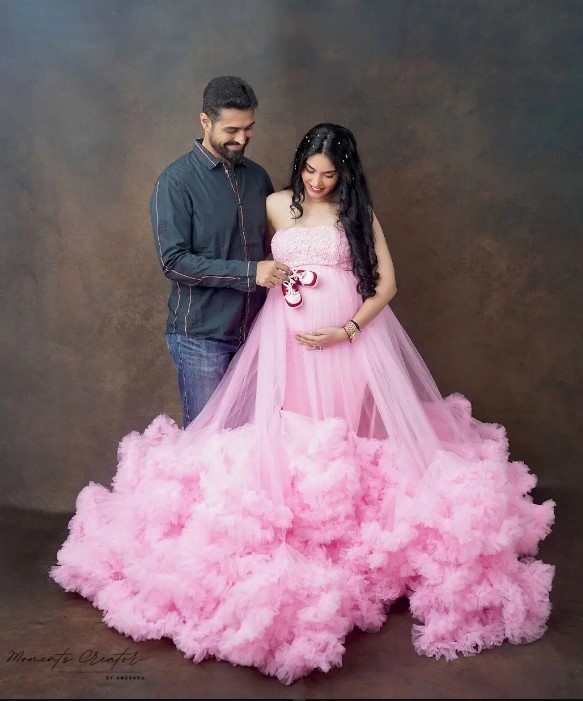
Photographing Newborns: Tips for Getting Perfect Shots for Parents
Photographing newborns is a rewarding yet challenging experience that requires patience, creativity, and technical skill. Capturing the delicate features and tender moments of a newborn can produce timeless images that families will cherish forever. Whether you are a professional photographer or a parent looking to take beautiful pictures of your newborn, here are some comprehensive tips to help you get perfect shots.
1. Timing is Everything
Newborns are best photographed within the first two weeks of life. During this period, babies tend to sleep more deeply and are more likely to curl up in the adorable poses that are iconic in newborn photography. Schedule your photoshoot accordingly to make the most of this window.
2. Create a Comfortable Environment
Newborns are sensitive to their surroundings. Ensure the room is warm (around 80 degrees Fahrenheit) since newborns can easily get cold, especially when undressed for the shoot. A space heater can be helpful, but be cautious to avoid overheating. Keep soft, soothing music playing in the background to create a calm atmosphere.
3. Safety First
Always prioritize the safety of the newborn. Never place the baby in a position that seems uncomfortable or unstable. Use props and assistants when needed to support the baby. If you’re not sure about a pose, it’s better to skip it. A composite image, where two photos are combined, can also be a safe way to achieve complex poses.
4. Natural Light is Your Best Friend
Utilize natural light as much as possible. Position the baby near a large window where the light is soft and diffused. Avoid direct sunlight as it can create harsh shadows and make the baby uncomfortable. A white curtain can help diffuse the light if it’s too strong. If natural light is insufficient, use soft, continuous lighting to mimic natural light.
5. Get the Right Gear
Invest in a good quality camera with manual settings. A DSLR or a mirrorless camera with a fast lens (like a 50mm f/1.8) is ideal for newborn photography. A macro lens can also be useful for capturing tiny details like the baby’s eyelashes or fingers. Tripods, reflectors, and softboxes can further enhance your setup.
6. Plan Your Shots
Before the shoot, plan the poses and props you want to use. Have a variety of blankets, wraps, and outfits ready. Think about different angles and compositions. Pinterest and Instagram are great sources of inspiration. However, be flexible as newborns can be unpredictable, and you might need to adapt your plan on the fly.
7. Keep It Simple
Simplicity often results in the most timeless images. Focus on the baby and avoid clutter in the background. Neutral colors and simple props like baskets, blankets, and wraps can highlight the newborn without distracting from the main subject. The baby’s expressions and tiny details should be the focal point of your photos.
8. Capture the Details
Newborns grow and change rapidly, so capturing their tiny details is essential. Focus on their little fingers and toes, eyelashes, and lips. Close-up shots of these features can be incredibly poignant and add variety to your photo collection. A macro lens can be particularly helpful for these types of shots.
9. Interact with the Baby
Engage with the baby to capture natural expressions and movements. Talk softly, make gentle sounds, or use a favorite toy to draw their attention. Be patient and wait for those fleeting smiles or yawns. These candid moments can often be the most precious and memorable.
10. Include Family Members
Incorporating parents and siblings in the photos can add emotional depth and context to the images. Capture the tender interactions between the newborn and family members. These shots can tell a beautiful story of love and connection. Encourage parents to hold or gently kiss the baby, or photograph siblings cuddling with the newborn.
11. Editing and Post-Processing
Post-processing is an essential part of newborn photography. Use editing software to adjust the exposure, contrast, and color balance. Smooth out any blemishes or redness on the baby’s skin. However, be careful not to over-edit; the goal is to enhance the natural beauty of the newborn. Presets and filters can also give your photos a cohesive look.
12. Be Patient and Take Your Time
Newborn photography sessions can take several hours, with breaks for feeding, changing, and comforting the baby. Patience is crucial. Take your time to get each shot just right. Allow for breaks and be prepared to reschedule if the baby is particularly fussy or uncooperative.
13. Use Props Creatively
Props can add an element of fun and creativity to your newborn photos. Soft blankets, knitted hats, and gentle stuffed animals can be adorable additions. However, avoid using too many props, as they can overwhelm the baby and the photo. The props should complement, not overshadow, the newborn.
14. Experiment with Angles and Perspectives
Don’t be afraid to experiment with different angles and perspectives. Get down to the baby’s level to capture their world from their point of view. Aerial shots, where the camera is positioned directly above the baby, can also create striking images. Move around and try various angles to find the most flattering ones.
15. Black and White Photography
Black and white photos can be incredibly powerful and timeless. They emphasize the textures and details without the distraction of color. Convert a few of your shots to black and white during post-processing to see if they evoke a different emotional response.
16. Capture Emotions
Newborn photos are not just about perfect poses; they are about capturing emotions and connections. Focus on the love, joy, and tenderness in each moment. The way a mother gazes at her baby, a father’s protective hold, or a sibling’s curiosity—these emotional elements will make your photos truly special.
17. Prepare for the Unexpected
No matter how well you plan, things might not go as expected. Newborns are unpredictable, and patience is key. Be ready to adapt and go with the flow. Sometimes, the best shots come from unplanned, spontaneous moments.
18. Educate the Parents
If you are a professional photographer, educate the parents on how to prepare for the session. Provide them with a checklist of items to bring and tips on how to dress the baby. Discuss the plan and poses in advance to ensure everyone is on the same page.
19. Maintain Hygiene and Safety Protocols
Newborns have delicate immune systems, so it’s crucial to maintain a clean environment. Wash your hands frequently, sanitize props and equipment, and consider wearing a mask if you’re feeling unwell. Safety should always be your top priority.
20. Capture the Surroundings
While the focus should be on the baby, capturing the surroundings can add context to your photos. Photograph the nursery, the crib, or other elements that have sentimental value to the family. These shots can help tell a more complete story.
Conclusion
Photographing newborns requires a blend of technical skill, creativity, and an abundance of patience. By following these tips, you can create beautiful, timeless images that capture the essence of a newborn’s first days. Learn More


